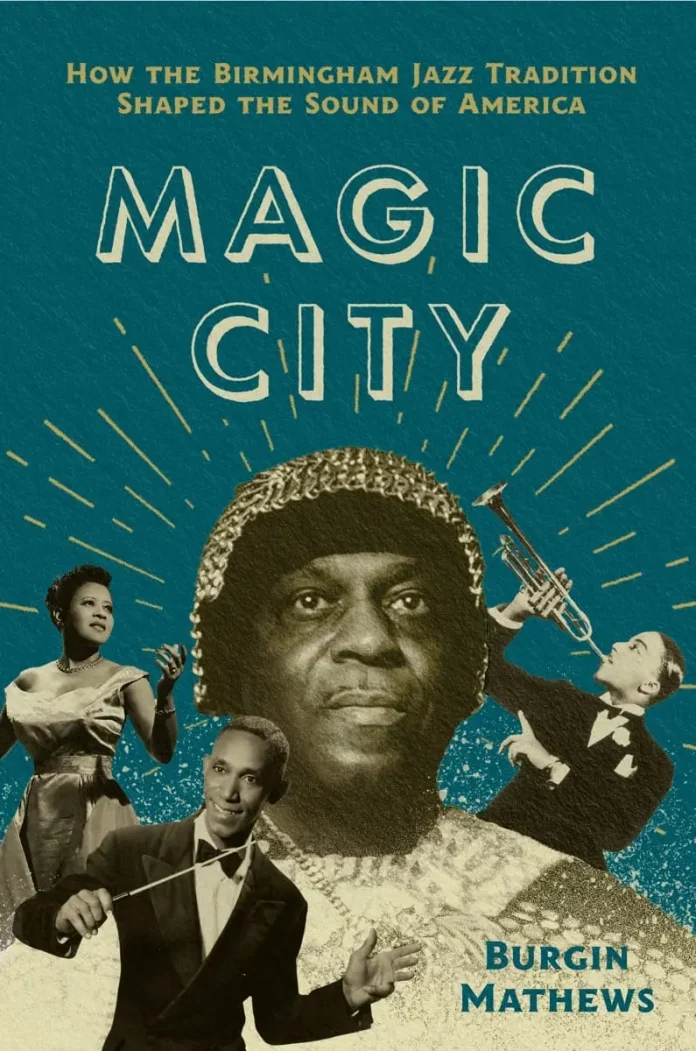Before and during the civil rights struggle of the 1960s and 70s in the United States, the industrial city of Birmingham (aka “Bombingham”), Alabama had the dubious distinction of being the most racially segregated and most violent city in the United States. African-American protests including sit-ins and marches were met with police brutality, and mass arrests. There was a physical attack on Nat King Cole in 1956 by members of the Ku Klux Klan when he was appearing at the Municipal Auditorium and the bombing of a Baptist church which killed four black Sunday-school children. In 1963 Martin Luther King Jr. was arrested in the city and jailed for his participation in a demonstration and during his incarceration composed “Letter From Birmingham Jail”, his famous apologia for non-violent direct action.
One of the many virtues of Burgin Mathews’ fascinating and rewarding book is his examination or rather exhumation of the “Magic City” – a nickname coined by publicists in the 1880s to promote Birmingham as a desirable and “vice-free” city. For musicians it was an incubator and disseminator of what came to be called jazz and was seen as more than simply “entertainment”. Its principal exponents were Erskine Hawkins, and the mystical “jazz iconoclast” Sun Ra (both born in 1914). Other luminaries included the flamboyant Cadillac collector and band leader John T. “Fess” Whatley, drummer Jo Jones, singer Ethel Harper, and music teacher Dr. Frank “Doc” Adams.
Two Birmingham residents, Avery Parrish and Erskine Hawkins penned jazz compositions – After Hours (Parrish) and Tuxedo Junction (Hawkins) – that became standards. But local educators, civic leaders and club owners also nurtured a vibrant jazz culture. Circus tent-shows, ballrooms, vaudeville houses and high-school band rooms spread the exhilarating message. As Mathews contends, “For much of the twentieth century Birmingham was home to one of the music’s essential unsung communities.” He plausibly maintains that jazz writings have neglected the role of such factors in inculcating the spirit of jazz.
By the 1930s, Birmingham jazz musicians were beginning to perform in New York and other northern cities, notably Jo Jones, who became a key member of the Count Basie rhythm section, and the band-leader Teddy Hill. Mathews asserts that “no musicians better symbolize the spirit of Birmingham jazz” than Erskine Hawkins and his orchestra, who would make Tuxedo Junction a national chart topper.
Sun Ra (Herman Poole Blount), on the other hand, had a more tenuous relationship with his home town. Always asserting that outer space was his birthplace, he claimed Birmingham as his earthly home. He once proclaimed that “I arrived from a distant solar system and combusted in the Magic City – Birmingham, Alabama.” One of his compositions was appropriately entitled The Magic City, which might (or might not) include “expressions of the grief, rage, and chaos” that he associated with his home town. Yet we are reminded that Sun Ra held himself aloof from the civil rights struggle.
Mathews concludes “Birmingham jazz was forged in the fires of segregation and shaped by a resilient and resourceful black community… but its message was also one that might transcend race.” He claims that the music itself made the “Magic City”, and that “without each other, neither the city nor the music would have been the same”.
The jazz flame was also kindled by “outsiders”. In 1933 Duke Ellington made his first appearance in Birmingham and left a lasting impression. Sammy Lowe, future arranger and member of the Erskine Hawkins orchestra reflected “Duke in one night probably encouraged every Black musician in town to practice harder, for his band showed that artistic and economic success could be attained in music. People talked for days about that night”.
Well-written, thoroughly researched and documented, with arresting photographs, Magic City is an original and valuable contribution to jazz historiography.
Magic City: How The Birmingham Jazz Tradition Shaped The Sound Of America, by Burgin Mathews. The University of North Carolina Press, 2023, 340pp, pb. ISBN 9781469676883
















